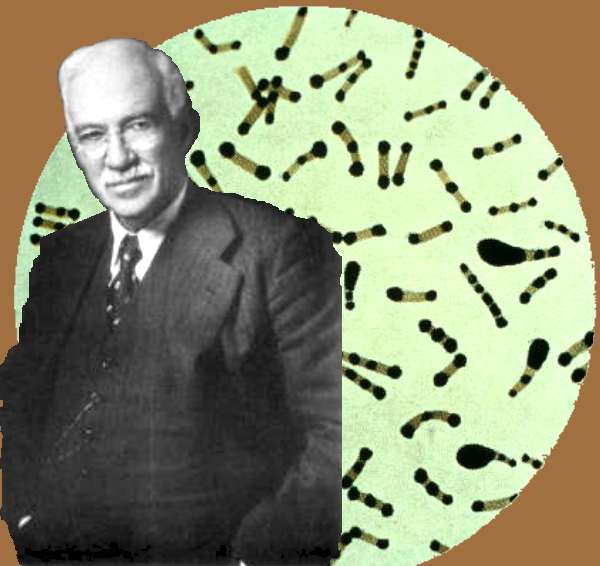Microbe Hunter
On December 30, 1863, American physician and bacteriologist William Hallock Park was born. He specialized in nose and throat diseases in New York City and soon became interested in the new science of bacteriology.
In NYC, a lengthy epidemic of diphtheria had become the leading cause of death in children. The diphtheria bacterium spreads through air-sprayed drops from sneezes and coughs. It usually infects the throat and nose, causing a lesion, abnormal tissue loss or damage, which often shows itself in a fibrous covering that can block the airway. Once infected, the bacteria produce toxins, harmful substances, which travel through the blood stream and can damage the body’s organs.
Park accepted an appointment to NYC’s Health Department Bureau of Laboratories. He worked with the department’s director of pathology and bacteriology, Hermann Biggs, who was the first in North America to learn how to identify bacteria of tuberculosis and of cholera. When European researchers identified the diphtheria bacterium, Biggs charged Park with the task of developing a bacterial test for the disease. Park invented a “culture tube” in which doctors could deposit cotton swabs rubbed against the throats of suspected diphtheria victims. NYC’s Health Department established depots where doctors could pick up and deliver the swabs and receive almost immediate test results.
When the first diphtheria antitoxin was developed in Europe, Park founded the department’s antitoxin laboratory to produce the world’s first large-scale dosages for inoculation. He was a gifted team leader who attracted and inspired the best researchers and staff to his laboratory. Over the next decades, Park also pursued every avenue available for the battle to improve public health. City newspapers led drives for money to produce and distribute the diphtheria antitoxin. Booklets and posters flowed into schools, clinics, and doctors’ offices by the millions. Park’s department swabbed tens of thousands of NYC schoolchildren and inoculated those who required treatment. Health department mobiles drove through the streets and parks. Although its effort was long, NYC’s pubic health system conquered diphtheria because its leadership sustained its focus, used its full organizational power, and supplied every medical step from diagnosis to inoculation.

Throughout his career, Park was a medical multi-tasker. From professorships in bacteriology at hospitals and medical college to consulting bacteriologist for the U.S. Quarantine Service. He wrote popular articles like “Who’s Who Among the Microbes”; technical articles in medical journals; and coauthored a practical manual for students, physicians and health officers. All the while, Park and his colleagues made outstanding contributions to public health in areas of smallpox, influenza, scarlet fever, pneumonia, measles, milk sanitation, and tuberculosis.
How valuable was Park to the city? The county medical societies petitioned NYC’s mayor to pass a resolution retaining Park in office… after he had reached the retirement age of 70! In NYC’s Department of Health and Mental Hygiene, the William Hallock Park Memorial Public Health Library provides published health-related information for health care service organizations and for the general public.
B Bondar / Real World Content Advantage